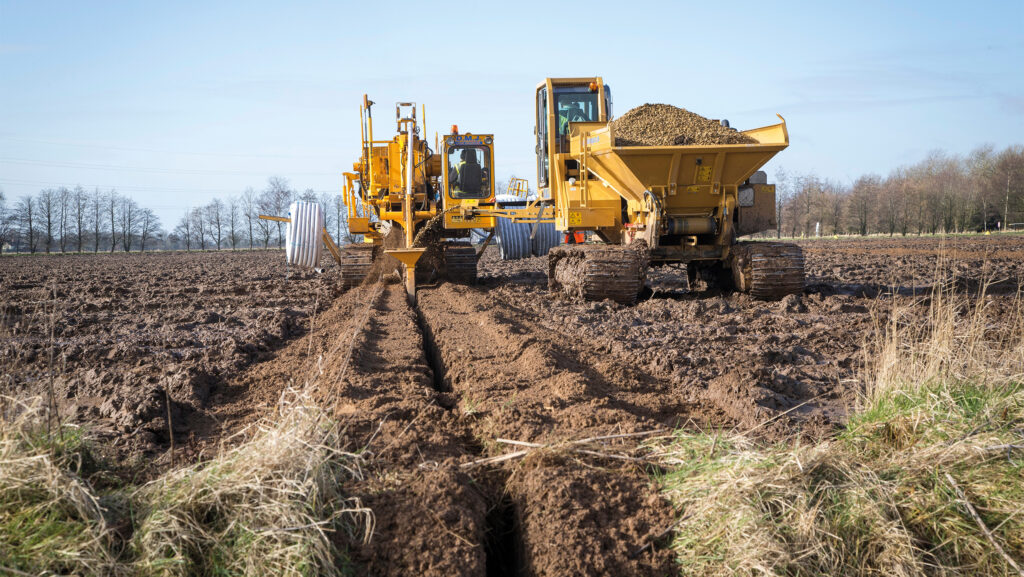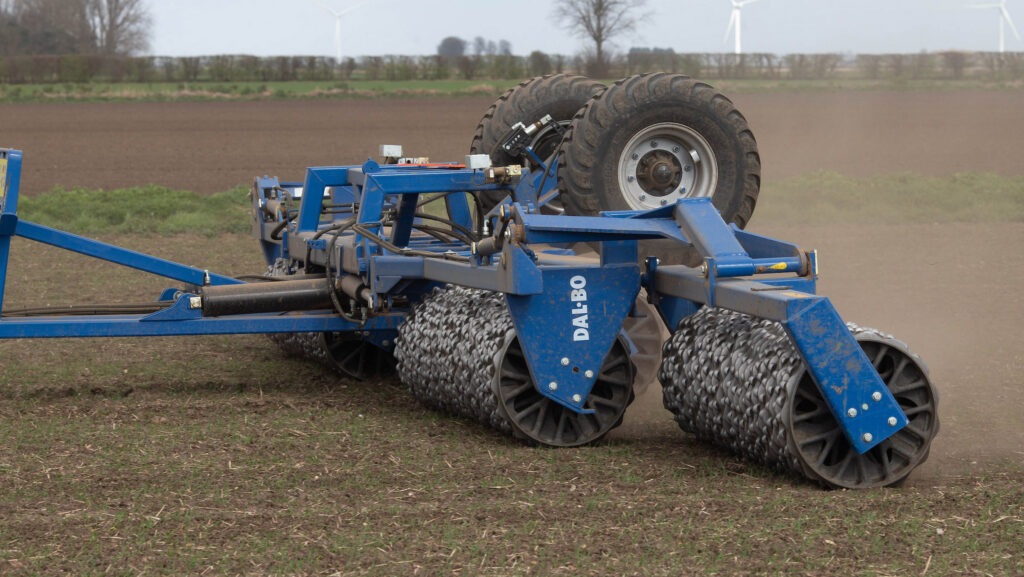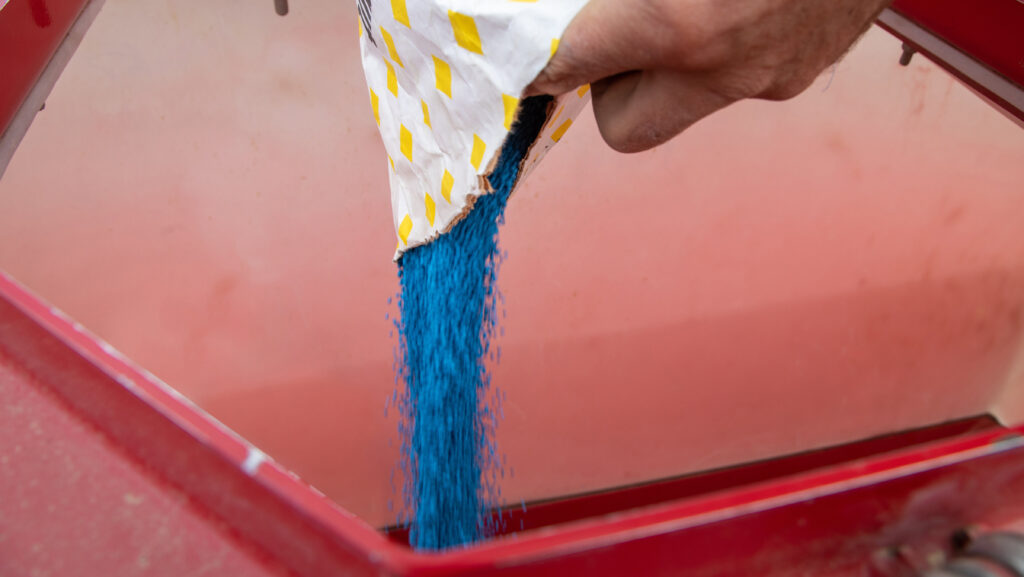Changes arable farmers are planning after tough season
 © GNP
© GNP After a difficult season, Farmers Weekly asks its Arable Insights grower panel what changes they are putting in place for next season.
Scotland: David Fuller-Shapcott
Despite losing much of his wheat area to a combination of wet weather and slugs, David Fuller-Shapcott believes it’s important not to have a knee-jerk reaction to last autumn.
“We’ve had bad autumns before – 2012 was a classic,” he says.
He’s already started getting things back on track – renting out the 40ha of land intended for wheat that was never drilled to a neighbour for arable silage.
See also: Agchem twin packs: Unwanted complication or cost saving opportunity?
“The idea is that the area will be ready for drilling a bit earlier than otherwise and will be put into wheat.
“It will effectively have had a double-break, and I should be able to drill in the second half of September, which is perhaps a week earlier than we might normally drill, depending on harvest progress and labour availability.”
With a controlled traffic system and zero-tillage approach, he doesn’t think much soil remedial activity will be needed ahead of next season, unless harvest is wet.
However, David is worried about slugs. “We have slug grazing in cover crops currently, so I think we will have to be very proactive with control.”
That might mean looking into buying a straw rake to disrupt slug eggs, making sure chopped straw is evenly spread, possibly baling oilseed rape straw, and, unfortunately, he says, being on the front foot with slug pellets.
He’s also going to be cautious with rolling, despite consolidation being useful for slug control.
“I’m going to avoid late rolling of crops as we got punished for it last season.
“If you consolidate and then get a lot of rain, the water cannot percolate so you are effectively mechanically keeping the water table high, with the consequence the crop struggles in the conditions we had last autumn.”
Wheat variety choice for next season will not change much – the unsown Brium will be used, with Tapestry featuring again.
Blackstone will be grown as a seed crop, while he’s planning to continue with a soft feed wheat blend of Astronomer, Brium, Elicit and Spotlight.
“We won’t home-save because grassweed control hasn’t been good this season,” he says.
That will lead to more attention on applying pre-emergence herbicides to the extent contractors will be used, if necessary, he says.

© Tim Scrivener
South: Tom Carr
Tom Carr is making several changes at Southwick Estate, in Hampshire, as the transition from tenant to in-hand farming continues.
About 80ha of marginal wheat growing land is earmarked for NUM3 legume fallow in the Sustainable Farming Incentive scheme.
This will be alongside a decent chunk of herbal leys for the beef enterprise, which will help provide forage requirements.
“It means I can stick those marginal fields into NUM3 and let it work its magic. Hopefully, it will do the soil the world of good, and then we can reassess in three years’ time.”
He says he might put it back into arable or do something completely different.
“It’s a block of ground that in theory lends itself to another vineyard,” Tom says.
He has just planted about 20ha of chardonnay, pinot noir and meunier vines for sparkling wine in two south-facing, sloping fields that were not performing in the arable rotation.
“It’s a whole new industry and crop that I’ve never had any experience in, but it’s going to be interesting to learn.”
Despite some fields of good-looking oilseed rape crops, he is also moving on from growing it.
“It’s just not reliable enough. We have good fields and then next-door ones that are now maize or peas that had all the same management and failed.”
It will be replaced by a mix of peas, maize, and grass for silage, with the latter two supporting growing beef and dairy enterprises.
Palladium is likely to join Extase as two of the estate’s wheat varieties.
“It will probably be Extase’s last year as it seems to be breaking down to disease. I’ve also had a look at Beowulf and Bamford – I like to try something different.”
He has toyed with idea of growing Group 1 milling wheats, but says he can’t justify the extra spend with the risk of not making the correct quality.
North: Tamara Hall
Changes to the rotation at Molescroft Farm, near Beverley, are limited to moving some of the most difficult land into a two-year legume fallow, with a decent area of spring cropping already committed to as part of a Mid Tier Countryside Stewardship agreement.
But Tamara Hall is increasing her focus on home-saved seed.
“In the past, I would often buy half new seed, but that’s too high an investment if the crop fails, especially with oilseed rape,” she says.
For the coming season, after the entire oilseed rape area failed, new seed will have to be bought.
The plan will be to just buy one or two bags of new seed each year and home-save the rest, she says.
“This means growing oilseed rape can be considered a cover crop if it fails and be replaced with spring oats.
“I prefer home-saved seed as you save from the best field and the seed is there when you need it,” she says.
Wheat variety, Extase is likely to be dropped due to the expense required to achieve the protein spec.
“We don’t get full milling spec unless we use an eye-watering amount of nitrogen.”
Instead, Champion and Typhoon will be the two main wheat varieties on the farm, which she hopes will allow for reduction in fungicide use.
“I need to keep things as simple as possible, as other parts of our business including dog-walking fields, offices and a children’s nursery are keeping us very busy.
“We aren’t just farmers anymore and the other parts are essential financially.”
Northern Ireland: Neill Patterson
At Cottage Farm in County Down, Neill Patterson is in the fortunate position of not needing to make too many changes to his operation next season.
Both winter and spring cropping established well, he says, and is looking relatively good as harvest gets under way.
His biggest decision is what variety to choose to replace Graham winter wheat.
“We’ve been growing Graham for a long time, but with yellow rust and the extra spend it needs now, I think I’ll drop it for next season.”
Palladium is edging to the front as its replacement to join Extase as his two wheat varieties, with Neill hoping to hear feedback from harvest before making a final decision.
He’s also wondering whether to grow a variety with barley yellow dwarf virus-resistance after having a few issues with the virus this season.
An earlier decision will be needed for his hybrid winter barley seed, with his seed supplier suggesting orders should be made before harvest.
“This season, we’re growing Canyon and Armadillo.”
South West: Dougal Hosford
Deciding whether to rejig the rotation to increase the area of spring crop to 50% from the current 35-40% is one of the key questions Dorset-based farmer Dougal Hosford is grappling with this summer.
Doing so would allow the farm to grow an overwinter cover crop on half the farm each year, giving more long-term soil benefits, as well as helping to simplify planning in a very complicated system.
“Spring barley is good, but fails one year in five – either because of yield, germination or grain nitrogen, while the spring break crops tend to be pretty dodgy, so it is understanding the effect on cashflow and profitability.”
Winter crops may be sown a week earlier – starting the second week of October rather than the third, following two challenging autumns.
One innovation from this season he will be repeating is growing strips of wheat varieties in a field for home-saving into blends.
“We combine across the strips so that the blend is ready mixed in the combine and trailers, rather than doing it in store with a grain bucket.
“If there is a variety which we decide we don’t want to add to the blend – this year, it’s Costello – we can cut that first before we cut the rest.”
The method does mean he needs to make decisions now about potential new varieties for the following autumn’s blend.
Goldfinch is one that is catching his eye, with its decent disease and barley yellow dwarf virus resistance.
In this year’s field, Mayflower is standing out, scoring highest for lack of septoria at the flag-leaf timing in assessments from son Fred and Niab Tag agronomist Greg Davison.
West Midlands: Rob Atkin
Second wheat area on Rob Atkin’s farm, in Staffordshire, will be reduced in the coming season in favour of extra spring cropping to help with grassweed challenges and rectify drainage issues that have shown themselves this season.
It will also help increase the area of niche crops flax and hemp on the farm.
A number of fields where the season has caused compaction will need low-disturbance subsoiling this autumn, if weather and time allows, Rob adds.
Facing the difficult balance between delaying drilling for grassweed management and not wanting to miss out on winter wheat establishment, Rob says he is planning to hold his nerve as best he can.
“If we get a good window in late September and it looks catchy longer term, we’ll probably drill some wheat in the cleanest fields or on heavier land where the window closes quickly.”
Another planned change is making sure wheat is rolled immediately behind the drill with pre-emergence herbicides applied within 24 hours.
“As long as it costs out, we will put Avadex (tri-allate) granules on, and then a decent pre-emergence stack.”
He’s also planning to graze fields with sheep in late winter.
“It needs careful management as we have had two experiences. On one hand, they did a great job and allowed us to go in with some herbicide in March and ended up with nice clean crops.
“But in some other fields, we grazed that little bit too late, and the wheat was slow to grow away and never got away from the grassweeds, and we ended up with a bigger problem.
“So it’s a fine line of looking for rising temperatures after it has been grazed, getting some fertiliser on, so the wheat is going to quickly tiller to get things in your favour.”

© Gary Naylor Photography
East Anglia: Jack Smith
While drastically changing practices after one tricky year is a mistake, it’s also sensible to evolve plans and avoid making the same situations again, East Anglian farm manager Jack Smith says.
“One for us is looking at our mix of milling varieties. Growing milling wheat makes sense on our fertile soils and with the premiums available.
“But the current options in Zyatt and Crusoe are inherently higher-risk varieties with poorer disease resistance, and we switched more to Crusoe in the worst possible brown rust year.”
He’s looking at a couple of new candidate varieties in Goldfinch and DSV’s Diamond as possible replacements, but without reliable miller endorsement, it is difficult to commit wholesale.
“It might mean we need to stick with Crusoe and Zyatt, but have more of a 50:50 share of both – to spread disease risk and look at location, fungicide programme and spraying practices.”
Some targeted subsoiling and mole-draining will be needed to rectify autumn 2023 soil damage, as well as some drainage repairs on wet land, highlighted by the winter deluge, that have moved up the priority list.
Wheat drilling dates are unlikely to change because of all the other factors involved. A 12m Avatar drill also gives more drill capacity than the previous 8m Vaderstad.
“We’re also looking seriously at implementing a controlled traffic farming system.
“We have the right width equipment and software to do it, and have moved to reduced traffic or even controlled traffic for potato establishment.”
Jack says it’s a question of whether he subscribes fully and will see improved performance as a result.
On the potato side of the business, the farm has invested in a new fleet of 10 box Larrington Trailers Guardian box loaders, with a cushioned pouch loading system.
That helps ensure best quality produce, and new weighing technology on each trailer should help improve efficiency, Jack says.
“It’s a significant investment for the long term.”
East Midlands: Heather Oldfield
After a difficult season establishing winter crops in Lincolnshire, investment in replacing 1970s herringbone drainage is a priority on the Oldfield’s family farm.
“We’d been doing a bit, but this year brought it home we need to do a bit more,” Heather Oldfield says.
About 24ha is now earmarked for replacement with the decent performance of the beef herd helping to justify the outlay.
Wheat drilling date will be brought forward a little bit from the second week of October – once bitten, twice shy, she says.
“But how much earlier will depend on the weather and longer-term forecast.”
With undrilled Dawsum from this season in the shed needing to be used, it’s likely Gleam will be dropped in favour of a newer variety, with top yielder on the AHDB Recommended List Beowulf on the wish list.
“It’s a Group 4 hard wheat that suits local homes and fits our on-farm Lingrain storage.”
Spring barley will remain in the rotation as it is helping against blackgrass, with Heather wanting to see harvest results before deciding on variety.
A small area of flax for fibre is also planned, if scheduled processing facilities in Lincolnshire come to fruition.

